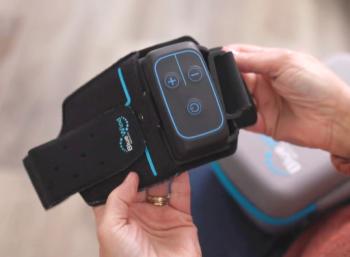
- Medical Economics April 2023
- Volume 100
- Issue 4
Advance care directives can prevent wrongful death lawsuits
There’s a surge in a new type of litigation: “wrongful life” lawsuits. These lawsuits emerge when hospitals and clinicians don’t bother to obtain or choose to ignore a patient’s documented care planning wishes.
Wrongful death lawsuits occur when alleged negligence has led to a premature loss of life. Those are well known. But there’s a surge in a new type of litigation: “wrongful life” lawsuits. Although not yet grabbing headlines, these lawsuits emerge when hospitals and clinicians don’t bother to obtain or choose to ignore a patient’s documented care planning wishes. These lawsuits not only cost the health care system substantially but call attention to the growing demand of today’s consumers wanting to have their voices heard in end-of-life decisions.
Advances in diagnoses, treatments, and medications are allowing people to live longer and more productive lives, making end-of-life care issues of growing significance. But is this an issue strictly of personal values, or is it also an issue of economics and public policy, as well as a looming public health crisis? Actually, it is all of these.
End-of-life care is a subject that Americans avoid, but we shouldn’t. Instead, we should embrace the fact that we are the first generation in human history that has some say about how, when and where we die. In this regard, we are empowered as never before and can avoid (or greatly reduce) what we fear the most — pain, isolation and dependency — by taking one simple step: completing an advance care directive.
Advance care directives provide the opportunity to clearly articulate who can make medical decisions for us when we can’t, whether we want heroic measures, where we want to receive treatment and what is important to us as we weigh days of life vs quality of life. Thaddeus Mason Pope, J.D., Ph.D., professor of law at Mitchell Hamline School of Law in St. Paul, Minnesota, says, “It’s a medical error to provide too much treatment, just as it is to provide too little treatment.”
It is ironic that in our culture, which celebrates personal freedom, autonomy and equity, only 40% of Americans have completed these forms, and the rate is approximately 20% in minority groups. That makes this an issue to which attention must be paid. “From an ethical point of view, a patient has the right to decide their end-of-life treatment,” says Samuel D. Hodge Jr., J.D., a professor of legal studies at Temple University in Philadelphia. “And that decision must be respected.”
Having an advance care planning document in place and easily accessible makes it possible for the patient’s voice to be considered in clinical decision-making and increases the likelihood that the care delivered will align with their values and priorities. This is especially important when the patient, for whatever reason, is unable to make decisions for themselves. As a career emergency medicine doctor, I’ve seen the positive outcomes when patients have committed those decisions to paper (or video) and have designated a trusted individual to help assure that their wishes are respected. In those cases, care is personalized, and families are not as distressed. Sadly, I have also seen what happens when an advance care plan is not made or is not readily available in time of need: Stress, chaos, conflict and heartache ensue.
Although the primary reasons to complete advance directives are for individualized care and respect for values and wishes, every health care policy action has financial implications. Completion of advance directives will reduce health care costs by respecting people’s choices. For most Americans, it is estimated that 25% or more of all the health care dollars spent in their lives will be spent in the last months of life. Money is often expended to keep people alive far past any reasonable hope of recovery. It’s money that could be spent earlier when the impact would be much greater in terms of quality and length of life. Not only should individuals complete advance directive forms, but clinicians must learn to honor them. That will require training and a change in medical culture.
Advance directives are not just for old people. The three most famous medical-legal cases in this field all concerned women under 30 years old: Karen Ann Quinlan in 1976, Nancy Cruzan in 1990 and Terry Schiavo in 2005. When medical catastrophes occur in younger people, the decisions become even more difficult. That’s why every American over the age of 18 should complete an advance directive and why we should update them routinely as our life circumstances change. There are many sources of advance directive forms. One of the easiest and most user-friendly (and free) is available at
The inevitable cannot be avoided, but how we get there can be a supported, manageable, family-centered experience that respects individual values. Having an advance directive on file should be as routine as getting a driver’s license or a Social Security number. The cost is negligible, and the payoff is substantial.
Dan Morhaim, M.D., is a career emergency department physician and former faculty member at the Johns Hopkins Bloomberg School of Public Health. He served for 24 years in the Maryland state legislature and is the author of Preparing for a Better End.
Articles in this issue
over 2 years ago
A malpractice defense attorney explains how to prevent a lawsuitover 2 years ago
Get your practice started on risk-based payment modelsover 2 years ago
Adverse actions against physicians can bring dire consequencesNewsletter
Stay informed and empowered with Medical Economics enewsletter, delivering expert insights, financial strategies, practice management tips and technology trends — tailored for today’s physicians.














